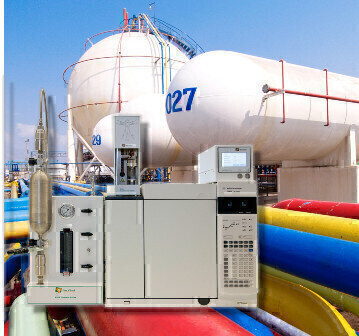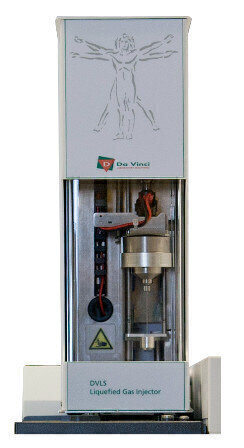Measurement and Testing
Revised LPG specification ASTM D1835 now lists the GC method ASTM D7756
Mar 15 2017
ASTM has revised the LPG specification standard D1835-16 to include the gas chromatographic (GC) method for the residue analysis: D7756-13. This GC method is based on the Liquefied Gas Injector technique developed by Da Vinci Laboratory Solutions, which eliminates the need for the evaporation of the liquefied gas.
Residue analysis in LPG by oil stain method
Control over residue content is essential in end-use applications of automotive LPG. Residues could lead to troublesome deposits that will accumulate, corrode or plug the fuel filter, the regulators, the fuel mixer or the control solenoids. The revised specification standard for oily residue in LPG lists ASTM Method D2158- the oil stain method- and D7756 -the gas chromatographic method.
D2158 requires the evaporation of 100 milliliters of LPG. After evaporation, the remaining volume of the residue is read from the glass evaporation tube. Next step is to dissolve the residue in a solvent, drip the resulting solution slowly onto the adsorption paper. The size and persistence of the stain, which remains on the paper after the solvent evaporates, is the second quantification of the oily residue. Both quantifications are not very accurate and offer a safety risk due to the evaporation of the flammable LPG samples.
Residue analysis in LPG by GC method
Da Vinci Laboratory Solutions developed a safe, fast and accurate technique to determine oily residue in C3 and C4 streams: the Liquefied Gas Injector. The technique has been standardised as ASTM D7756 & EN 16423 and uses a direct injection technique.
The direct injection approach of the Liquefied Gas Injector includes the proven fuel direct injection technique used by the automotive industry to inject fuel into the automotive engine combustion chamber. The LGI is connected to a standard GC injector needle, which is inserted into a GC large volume on-column injection system. Solenoid activation transfers the pressurised sample through the needle directly on-column. A sliding device moves the needle downwards for the injection and upwards for purging.
The sample is injected under a constant pressure. The chromatographic analysis after the sample introduction is based on boiling point separation of the oily residues and contaminants.
The total residue is quantified using area summation of the components in the range of C10 to C40. The result is reported in parts per million (w/w) of residue in LPG.
Accurate and Fast Performance
Several case studies demonstrate an excellent and fast performance of the LGI. The case studies are described in the various application notes. Download the application notes to learn more on the various applications of the LGI or contact Da Vinci:
- Oily residues and light contaminants in LPG (ASTM D7756, EN 16423)
- Hydrocarbon composition of LPG (ASTM D 2163, ISO 7941)
- Sulfur compounds in liquefied petroleum gases
- Desulfurization additives in LPG: DIPA, MEA & DEA
- Inhibitors, additives and Dimers in Butadiene: ACN, ρTBC, Butadiene Dimer
- Nitrogen, carbon dioxide, hydrogen sulfide and C1-C36+ hydrocarbons in unstabilised gas condensate.
Digital Edition
PIN 25.1 Feb/March
March 2024
In This Edition Safety - The technology behind the ION Science Tiger XT - Safety with ammonia and LOHCs as hydrogen carriers Analytical Instrumentation - Discussion on new tribology te...
View all digital editions
Events
Apr 28 2024 Montreal, Quebec, Canada
Apr 30 2024 Birmingham, UK
May 03 2024 Seoul, South Korea
May 05 2024 Seville, Spain
May 06 2024 Riyadh, Saudi Arabia

.jpg)


















